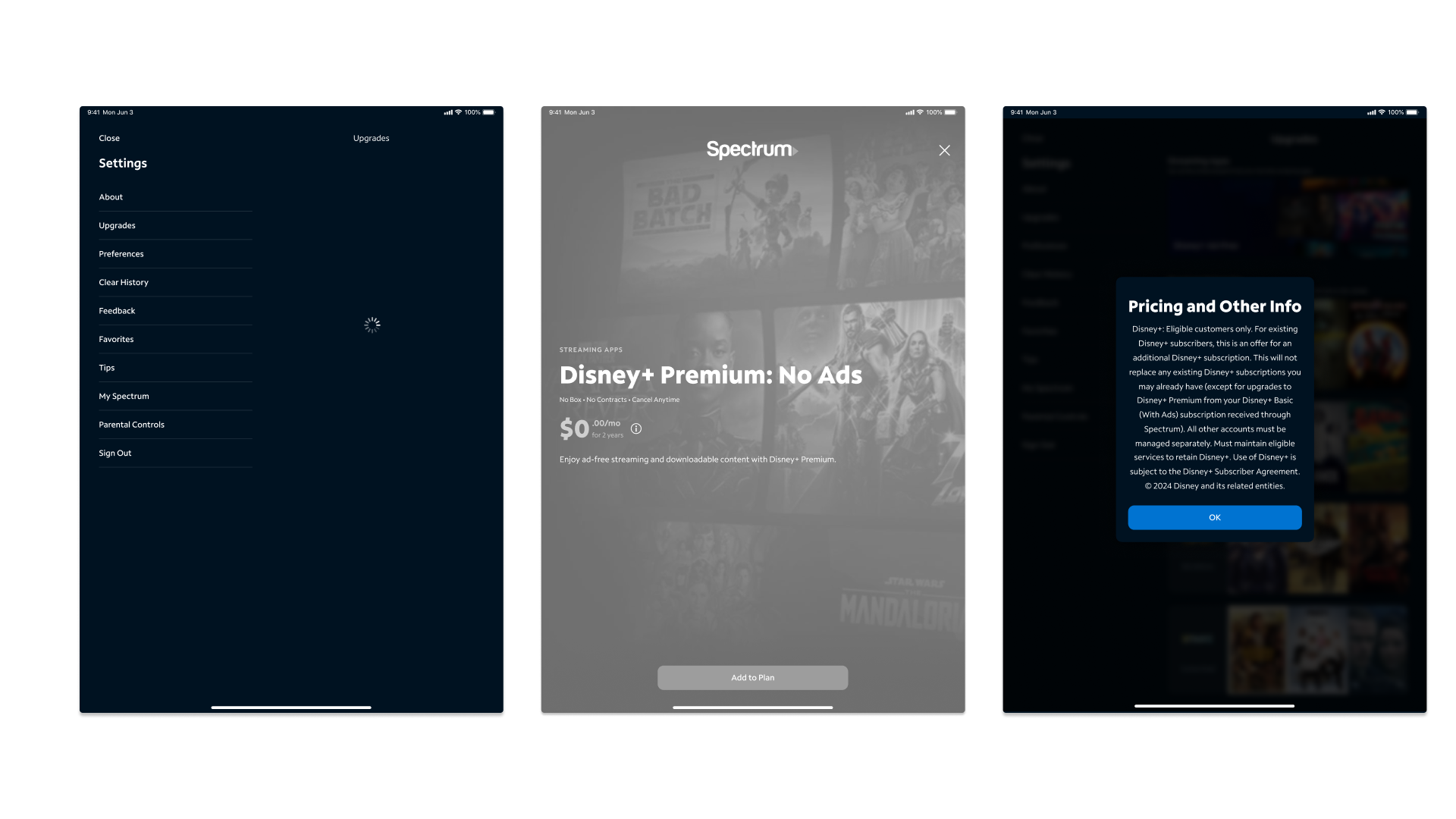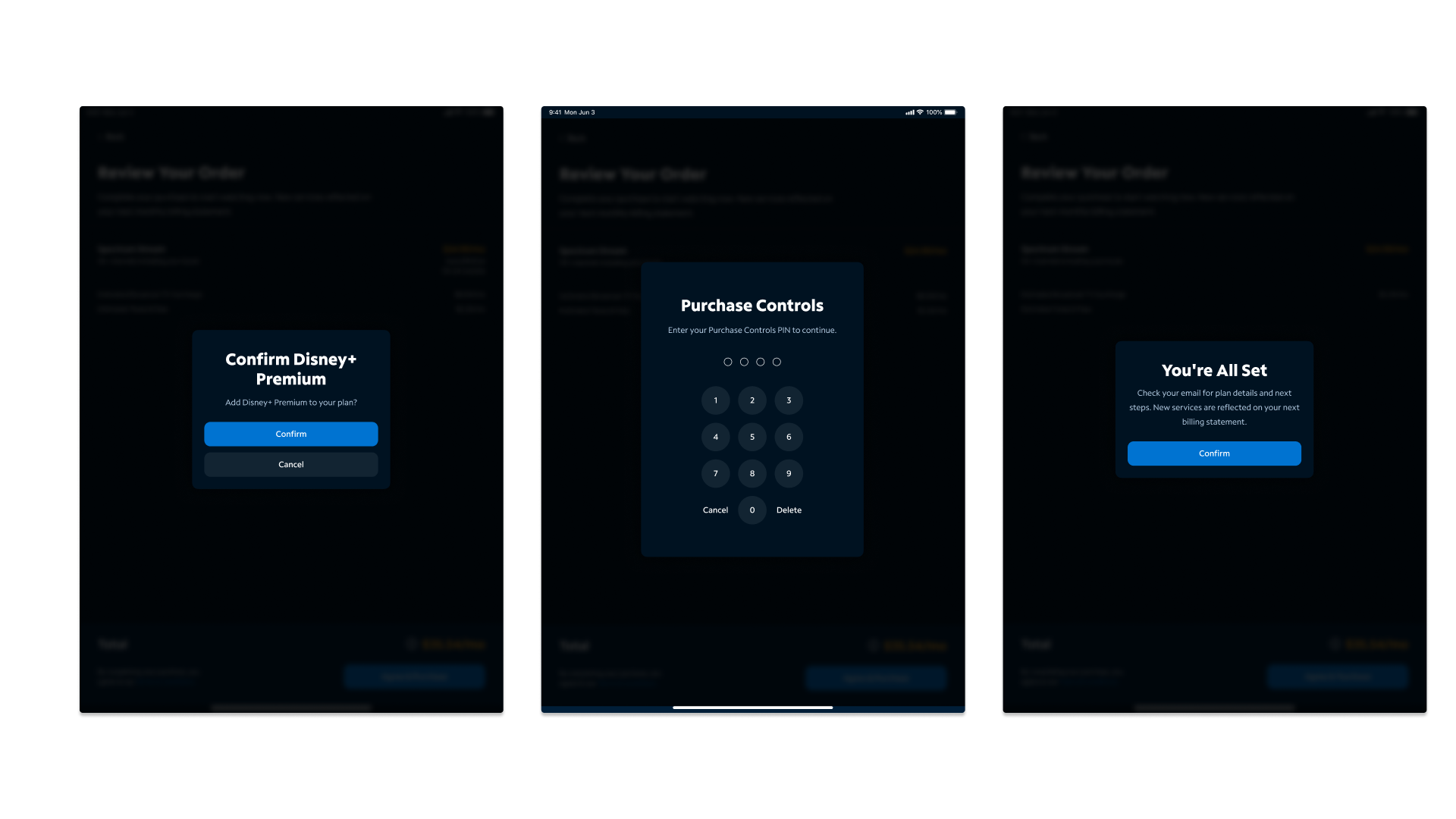Nino Silva
Video Product Design
Overview
Spectrum’s video ecosystem has been evolving from legacy QAM set-top boxes to IP-based streaming platforms. In the QAM era, my team focused on integrating major partner apps like Netflix, Prime Video, YouTube, and Max directly onto set-top boxes, providing customers with access to third-party content in a unified TV experience.
As QAM platforms began to phase out, Spectrum’s new IP approach leverages Spectrum TV Apps (STVA) across devices such as Apple TV, Roku, Xbox, Samsung Smart TVs, Xumo, iOS, and Android. This shift supports a new a la carte partner model where customers can sign up for discounted subscriptions to services like Disney+, Hulu, Peacock, Paramount+, and Max through the STVA app. They then log into the partner apps with their own credentials, gaining the benefit of discounted access while Spectrum gains upsell and retention opportunities without hosting the content itself.
This project complements my previous QAM-era case study, showcasing how my role evolved into principal-level orchestration for IP-based streaming experiences.
My Role
As a Principal Product Designer, my responsibilities focused on upstream UX strategy, cross-platform orchestration, and partner enablement, while coordinating downstream production execution. I partnered with product leads to map the new upsell experience across several IP platforms and built a multi-platform framework that leveraged existing UI kits and design systems. This framework highlighted capability gaps, platform inconsistencies, and areas where design debt needed to be addressed before the new business model could launch.
I evaluated Apple TV, Roku, Xumo, Xbox, Samsung Smart TV, iOS, and Android for readiness, identifying any blockers that could prevent nationwide feature launches. Each platform had a dedicated production designer, and I delegated tactical execution to them while removing barriers and aligning timelines.
I also coordinated internally with Spectrum’s curation teams to acquire and integrate partner artwork and promotional assets and facilitated communication with external partners to ensure brand consistency and approval for launches. This process moved seamlessly from strategic planning to partner alignment to platform execution.
Process and Deliverables
The work began with mapping existing platform capabilities and highlighting where gaps in interaction or visual parity would prevent a successful upsell experience. I created roadmaps for design debt resolution and documented cross-platform parity requirements. These materials served as a bridge between product strategy, internal design teams, and external partner expectations.
Final deliverables included a multi-platform UX framework, internal documentation for product and design leadership, and partner integration guides for artwork and launch readiness. While I did not create new UI from scratch—since mature design systems were already in place—I ensured the systems were applied consistently to meet the demands of this new business model.
Impact
The project enabled Spectrum’s IP products to support a new revenue model for a la carte partner upsells. It ensured that hundreds of thousands of customers nationwide could access partner offers across all supported platforms without disruption. By addressing platform inconsistencies and coordinating design debt resolution, the launch avoided delays and created a repeatable framework for future partner integrations.
This work reflects my focus on bridging business goals with design execution, evolving from legacy QAM workflows to modern IP streaming experiences. It demonstrates how principal-level product design can shape strategy, orchestrate multi-platform efforts, and deliver scalable impact across consumer video ecosystems.












